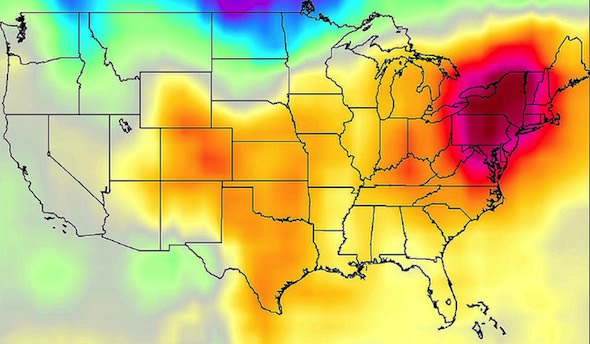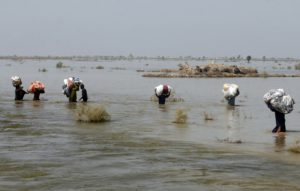Global Warmth Trend Hides Local Variants
Analysis of decades of data on land surface temperatures has shown researchers that the global average can mask distinct regional variations.
By Tim Radford, Climate News NetworkThis piece originally ran on Climate News Network.
LONDON — US scientists have studied the obvious and found some surprises. The average rise in global temperatures because of rising levels of greenhouse gases is just that, an average – but it masks some unexpected variations.
Zhaohua Wu and colleagues at Florida State University report in Nature Climate Change that they looked at 100 years of data about land surface temperatures in every continent except Antarctica.
And they found that when global warming began to announce itself, it did so in different regions at different times, and some places even got cooler. The overall result was global warming, but new statistical analysis revealed a changing mosaic of temperature differences.
“Global warming was not as understood as we thought,” said Wu. The first clear pattern of warming emerged around the Arctic Circle and the sub-tropical regions in both hemispheres. The largest accumulated warming so far has been in the mid-latitude regions of the northern hemisphere.
Cooling Andes
The match of old data and new techniques enabled the researchers to make a series of world maps, offering “snapshots” of local average temperature increases at 10-year intervals from 1950 to 2009.
These reveal a pattern of warming that began in Labrador, Greenland, Scandinavia and eastern Siberia, with blotches of unexpected cooling in the western Sahara, inland Brazil and the Chilean Andes.
Over the following six decades, Asia, Europe and North America warmed conspicuously, and the southern hemisphere unevenly: by 2009 the only region that seemed to have actually grown cooler and stayed that way was in the Andes.
Consistent
In one sense, the research confirms what meteorologists and climate scientists and geographers have known all along: that the world is a complicated place.
Atmospheric circulation patterns in the two hemispheres are different, and atmospheric mixing is slow; oceans and atmosphere and land interact in ways that produce local temperature variations that have nothing in particular to do with anthropogenic global warming.
But the study could also help other researchers begin to tease out more precisely the differences between local and regional natural cycles of warming and cooling and the overall impact of greenhouse gas emissions, and help economists, politicians and planners prepare a little better for climate change.
And, the scientists warn, the trend they observe “seems to be consistent with the slowly increasing carbon dioxide in the atmosphere.”
Your support matters…Independent journalism is under threat and overshadowed by heavily funded mainstream media.
You can help level the playing field. Become a member.
Your tax-deductible contribution keeps us digging beneath the headlines to give you thought-provoking, investigative reporting and analysis that unearths what's really happening- without compromise.
Give today to support our courageous, independent journalists.






You need to be a supporter to comment.
There are currently no responses to this article.
Be the first to respond.